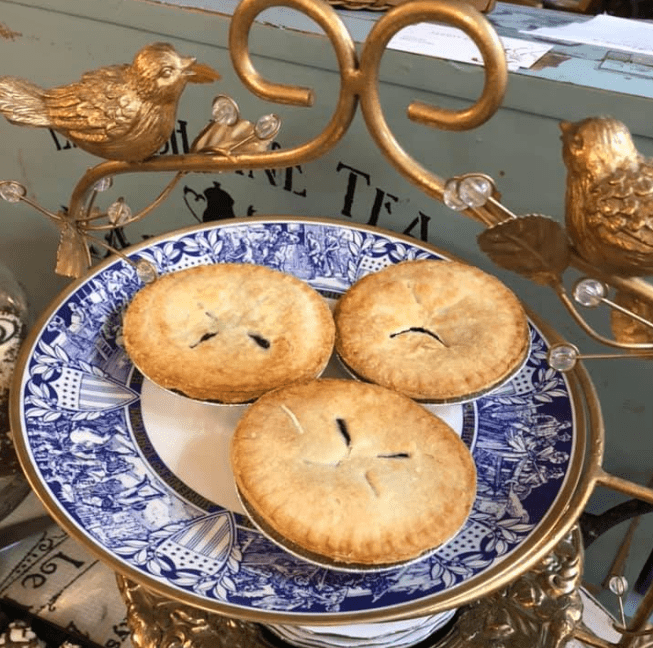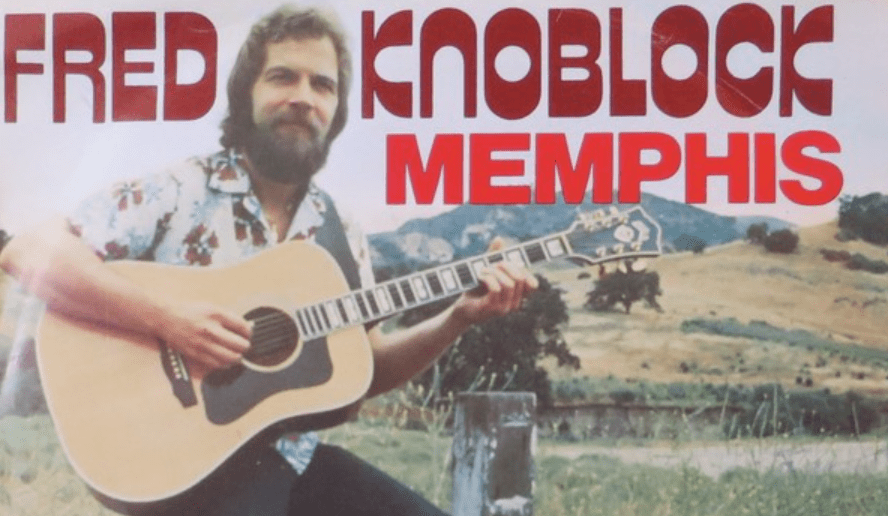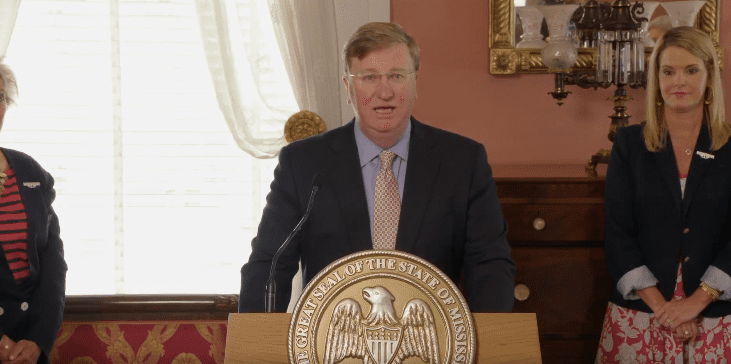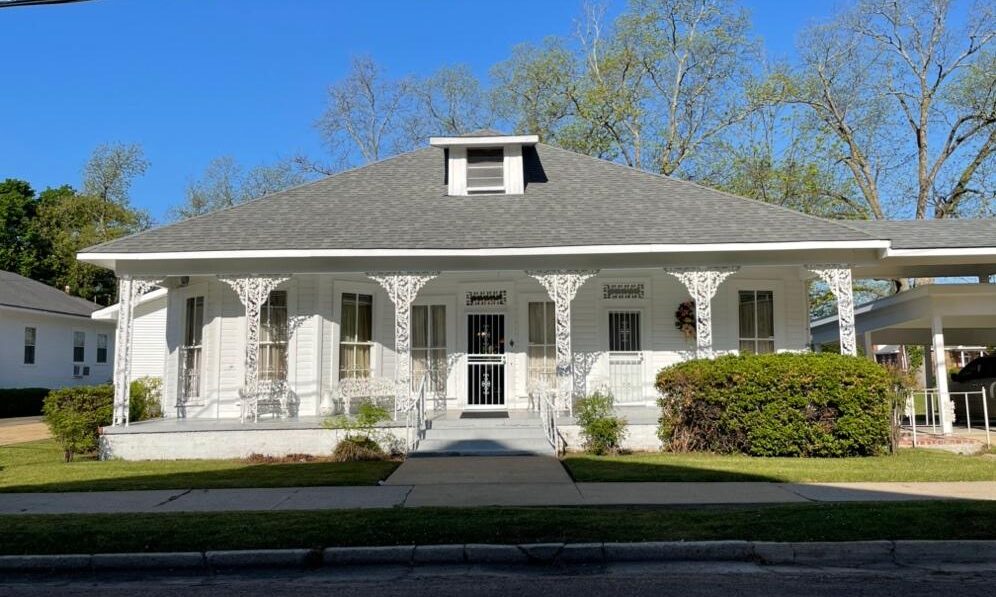
- Known as the “Grandma Moses of Stitchery,” Ethel Wright Mohamed one said there was “just a soothing music as the needle comes through the cloth.”
Almost two years ago, a black-framed picture in the dining room of a friend’s home caught my eye. I went closer to investigate. I discovered it was a signed print by Ethel Wright Mohamed, a well-known folk-art embroiderer.
Stitched in gold, the first line, “Ethel Wright Mohamed,” line two, the date of 1974, and on the last line, the copyright symbol. Embroidered in black capital letters, at the bottom of the picture, “Double Springs Baptist Church 1874.” Again, in black embroidered letters, another description, “Welcome Sacred Harp Singing.”
Ethel stitched over 175 pictures in 26 years. Her daughter, Hazel Mohamed Wilson, age 98, who lives in California, told me this was her favorite.
From Fame to Belzoni
Born on October 13, 1906, Ethel Lee was the first of four children (three girls and one boy) born to Elijah Wright and Nina Bell Ramsay. Their home was in a small community named Fame—Webster County.
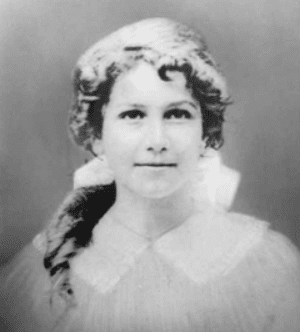
Her two sisters and brother had a good home life that included music, spiritual training, and embroidery teaching. She attended a one-room school with one teacher for grades first through eight.
The Wright family moved to Shaw when Ethel was about fifteen years old. She found a part-time job at a local bakery. While working here, a regular customer, Hassan Mohamed (age 32), would come daily to purchase fresh bread and sometimes cookies.
The cookies opened the door for Hassen to call on her at home. He brought gifts on his first visit for all the family members and wanted Mr. Wright involved in their conversations. Hassan was determined to make a good impression on his future father-in-law.
There was a slight issue regarding their relationship—religion. Ethel’s religious background was Primitive Baptist. Her father was a lay minister. Hassan, a Moslem, had come from Lebanon, was a believer in Islam. We know everything worked out because Hassan and Ethel were married on April 21, 1924.
A successful businessman, Hassan moved his small family to Belzoni in 1927. Here, he went into business with Dave Homod. They built and opened the D. Homod and H. Mohamed General Store. The new business survived the Great Depression. Ethel and Hassan enjoyed visiting New York and St. Louis to purchase merchandise. Working beside Hassan, she also became an excellent merchant. After his death on March 23, 1965, Ethel continued to work in the store.
Evenings were the hardest on the fifty-nine-year-old Ethel. Hassan and Ethel’s eight children were grown, married, and raising their families. She was alone. From her biography on the Mama’s Dream World website, comes this quote:
“I felt as if I was like a big ship floating around without any reason or any purpose, but one thing I had was a lot of beautiful memories. I wished I could live my life over. Of course, I couldn’t do that. I thought, if I could write, I would write a book. I tried my hand at painting, but painting wasn’t it. So, I decided to stitch a while. Sitting in my rocking chair, I got my needle and thread out and it was just the thing for me.“
Her drawing and stitching experiences as a small child, taught by her mother and grandmother, would take her down a road she could never imagine.
Stitchery Was Her Nightlife
Ethel Mohammed stitched her memories: her marriage, her children, a trip she and Hassan took to Europe, the Mediterranean, and Sarhine, Lebanon (Hassan’s birthplace), the store, Hassan’s days as a peddler, and her ancestor’s marriage—Sacred Harp Singing.
Everything changed for Ethel in the early 1970s when she held an open house on New Year’s Eve. Her daughter-in-law showed a few pieces of her artwork to visiting artist friends. A new year brought a new demand for her to share her artwork.
Her “memory pictures” were framed and displayed in the local schools and public library. Ethel branched out taking her framed stitchery to the art shows in Jackson and Memphis, Tennessee.
Artwork at the Smithsonian
Researchers from the Smithsonian were traveling across the United States in 1973. The two men visited an art exhibit in Jackson and found Ethel Wright Mohamed’s embroidery work. They invited her to attend the Festival of American Folklife. She attended the two-week event in 1974, representing Mississippi.
The following year, she was commissioned by Janet Stratton, a designer for the Smithsonian Festival, to design a piece for the Bicentennial Festival. According to Hazel Mohamed Wilson, “The piece was about the length of a king-size sheet, only rectangular.” Her tapestry became a part of their permanent 1976 collection. Ethel was famous!
Beverly Anglin, a resident of Canton, shares the following about her experience at the Smithsonian. “When I worked as a travel nurse in Washington D.C., I often spent weekends prowling through all the museums. At the Smithsonian, I stumbled upon the Americana Exhibit and discovered the folk art of Ethel Mohamed. Studying her work, you got a sense of the depth of her creativity in each stitch. She placed them in just the right spot to depict the scene she was creating.”
The Smithsonian gave her the title “Grandma Moses of Stitchery.”
The Ethel Wright Mohamed Stitchery Museum
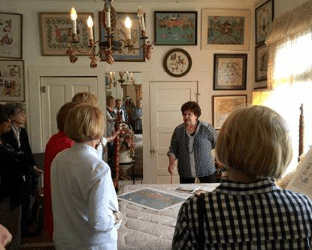
Time brought Ethel to a point when she could no longer travel. The next best thing, have people come to her and view her beautiful artwork; over 100 stitchery pictures were hung from the floor to the ceiling in her home. People came from across the United States and foreign countries to visit.
Groups, individuals, and bus tours could visit by appointment only. This is how the Stitchery Museum began. It is also referred to as “Mama’s Dream World.” Family and friends served as guides. Currently, the museum is under renovation. It is scheduled to reopen in several months.
The Third Crusade
A large picture called The Third Crusade hung in the home of Ollie (Ethel and Hassan’s oldest son and a Mississippi Senator) and Annelle Mohamad. According to their daughter, Sarah Mohamed Goldberg, the picture was donated to the state and is hanging in one of the Mississippi Museums in Jackson.
“As far as I know, this hasn’t been written about,” Sarah shared regarding this picture. “In most of her pictures, she stitched on her little dogs, chihuahuas. They loved her and would eat us up if we tried to get near her. The very last picture in The Third Crusade is of her dog. She stitched him in! She never finished that picture. Looking closely, you can see where she planned to return.”
Auctions and Awards
Ethel’s needle and thread stitchery caught the attention of Dr. Toxey E. Hall of Belzoni. He asked her to create and embroider a picture for the American Heart Association, “Art for Hearts.” This was the first of several donations she made for auctions.
Regarding the “Art for Hearts” auction, in a 1992 article in the Tuscaloosa News, Ethel told the interviewer, “Well, mine was the very last picture to be auctioned, and I thought, ‘Heavenly day, there won’t be any money left for mine.’ But when the time came, I held my breath and waited. When it was all over, it had sold for $7,000.”
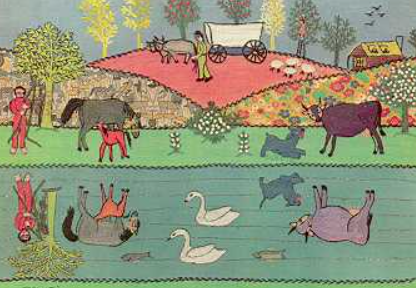
She also told that reporter, “There is just a soothing music as the needle comes through the cloth.”
You will find her approximately twenty-five donated pieces across the state. Some are The Children’s Cancer Clinic, the Museum of Mississippi History, and William Carey University.
Her work was displayed at the Lauren Rogers Museum of Art in 2007. An article titled, “The Needle’s Song: The Folk Art of Ethel Wright Mohamed” discusses Mohamed’s piece, Reflections on Spring Creek (1972), and The Sacred Harp Singing (1974).
In 1991, Ethel received the Governor’s Lifetime Achievement Award for Excellence in the Arts.
Additional Stitches
Hazel Mohamed Wilson wanted me to be sure and share about the work of William Ferris, born in Vicksburg. He served as the head of the National Endowment of the Humanities and is known for his documentation of the American South.
He interviewed Ethel several times, and at one point, Hazel said, “he tried to record the sound of Mama pushing the needle and thread through the cloth.”
Granddaughter Lee Ann Mohamed Moore shared the following quotes from Ethel. Lee Ann uses these in her talks about her grandmother:
“I never pull out a stitch, though, once I’ve put it in. Once in a while one of my little people will be ugly in the face, but I will just tell them, “I’m not going to pull you out. You were born that way, and that’s the way you’re going to stay!”
“When I first started doing embroidery, I was kind of ashamed of it. So, I didn’t show it to anyone but the children, just for conversation.“
Linda Dickey Montgomery from Hattiesburg wrote in an email to me, “Laura, any work of hers is a treasure. I had the pleasure of meeting and visiting with her in their family store in Belzoni. Later, she was a guest on the television show I hosted for the Mississippi Department of Agriculture and Commerce, Down a Country Lane, in the 70s.”
Ethel Lee Wright Mohamed died on February 15, 1992. On her tombstone are these words, “She shall be brought before the king in raiment of needlework” Psalm 45:14 (KJV).
You can visit the Ethel Wright Mohamed Stitchery Museum at 307 Central Street in Belzoni and find them on Facebook here.

